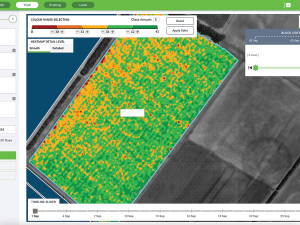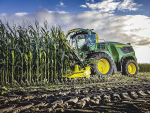A New Zealand startup is providing growers with vital information for daily operations and long-term vineyard management, using a unique and scalable AI vine scanner that gives a vine-specific view of disease, pruning, land productivity and yields. Forty Cropsy systems have been deployed throughout New Zealand, the United States and France, with more than 20 million vine scans conducted in the past 12 months.
One of Cropsy’s four co-founders, Leila Deljkovic, says the scanner covers extensive vineyard areas that scouting simply cannot. “The scanner mounts to any vehicle that drives through the vineyard regularly, so compared to boots-on-the-ground, Cropsy provides richer and fresher data for precision vineyard management at scale. Those decision-ready insights are delivered before your first coffee of the day.”
Cropsy uses its innovative AI scanning technology to pinpoint every vine – including missing or dead vines, mildew infection, bunch, cane, spur, and bud in real time, as the vehicle passes through the vineyard. In operation, Cropsy scanners can analyse up to 8,000 vines an hour, with the insights available in as little as 30 minutes, though typically by the next morning.
The result is a ‘digital twin’ of the vineyard, delivered using comprehensive reports, dashboards, maps, tables, or printouts to share with in-field workers. Subsequent passes build a vine-by-vine history of the vineyard to inform how things are changing.
Cropsy’s latest commercial traction has proven key use cases in vineyards, particularly around labour availability challenges, by improving pruning quality and ensuring adherence to the pruning specifications with rapid feedback to workers. The data also helps to direct labour to the right spots for mildew management, escalating treatment before
an outbreak forms.
The system also provides early warnings of mildew infections, allowing a targeted approach to treatment decisions, alongside providing inflorescence and cluster counts to improve yield forecasts, while also identifying underperforming or dying plants in the vineyard. It also allows precision replanting of new vines to replace failed plants.
Some of the most used features on the Cropsy platform include mildew evidence photos, where growers can view proof of the scanner detections from their desktop, and block-level pruning statistics, which highlight over or under-pruned rows. The company also plans to develop support for new trellis and pruning styles to reach more growers around the world, and expects to release a much-anticipated grapevine trunk disease feature this spring.
In 2024, extensive, live in-vineyard demos took place across New Zealand and this year have been enthusiastically welcomed in the US market. Recently, Cropsy signed up its first service provider – Flowerday Contracting in Marlborough – which targets small and medium sized growers. The Marlborough Grape Growers Co-operative is using Cropsy across all its member growers, working with Flowerday Contracting to undertake the scanning. Co-op growers all have their own access to the Cropsy platform for their blocks.
cropsy.tech














